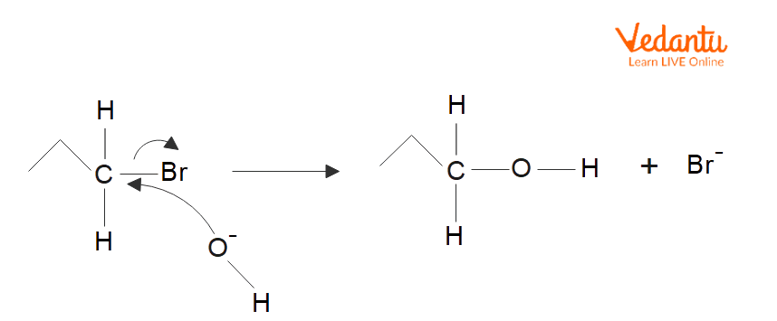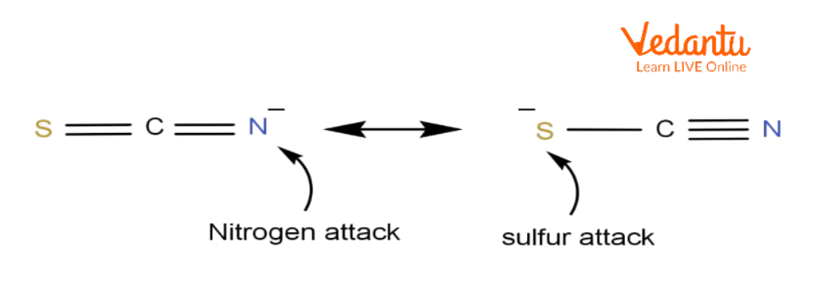




What are Ambient Nucleophiles?
Nucleophile may be a word used to refer to substances that tend to give electron pairs to electrophiles so as to make chemical bonds with them. Any ion or molecule having an electron pair that is free or a pi bond containing 2 electrons has the ability to behave like nucleophiles.
In other words, nucleophiles are unit Lewis bases. The word “nucleophiles” suggests that (“nucleus loving”, or “positive-charge loving”). Read ahead to know more about ambient nucleophiles, their types and examples.
What is a Nucleophile?
Nucleophiles are essentially electron-rich species that have the capacity to donate electron pairs, as mentioned earlier. Due to this electron pair donating tendency, all nucleophiles are Lewis Bases.

Reaction of Nucleophile
Nucleophilic Name Meaning
The phrase ‘nucleophile’ may be cut up into parts, particularly nucleus and philos. Philos is the Greek phrase for ‘love’. Therefore, nucleophiles may be thought of as Nucleus Loving species.
Terminologies of Nucleophile
The nucleophilic nature of a species describes the affinity of the species to the positively charged nucleus. Nucleophilicity is a phrase used to evaluate the nucleophilic individual of various nucleophiles in a query. It also can be referred to as the nucleophilic strength of a species.
Nucleophilic substitution is a form of reaction that takes place while an electron-rich nucleophile selectively donates a charged (or a partially charged) atom in a molecule and replaces a leaving group with the help of bonding with the positively charged species.
Solvolysis is a form of nucleophilic substitution reaction in which the nucleophile in question is a solvent molecule. A correct instance of this sort of nucleophilic solvent is water, and the solvolysis with water is also known as hydrolysis.
Types of Nucleophiles
Halogens: The diatomic shape of a halogen does not show the nucleophilic reaction. However, the anionic forms of those halogens are good nucleophiles. An example of this is: diatomic iodine (I2) , which does not act as a nucleophile, while I– is the most powerful nucleophile in a polar, protic solvent.
Carbon: Carbon acts as a nucleophile in lots of organometallic reagents and additionally in enols. Some examples of compounds in which carbon acts as a nucleophile consist of Grignard Reagents, Organolithium Reagents, and n-butyllithium.
Oxygen: The hydroxide ion is a remarkable example of a nucleophile in which the electron pair is donated with the help of using the oxygen atom. Other examples consist of alcohol and hydrogen peroxide. It is vital to know that no nucleophilic attacks arise in the intermolecular hydrogen bonding that takes place in lots of compounds containing oxygen and hydrogen.
Sulphur: Due to the huge size, the relative ease in its polarisation, and the easily available lone pairs, sulphur has many nucleophilic qualities. Hydrogen sulphide (H2S) is an example of a nucleophile containing sulphur.
Nitrogen: Nitrogen is used in forming many nucleophiles along with amines, azides, ammonia, and nitrides. Even amides are recognised to show nucleophilic qualities.
Ambident Nucleophiles
What are ambient nucleophiles? An ambident nucleophile is an anionic nucleophile whose negative charge is delocalised by resonance over 2 unlike atoms or over 2 like but non-equivalent atoms. The most common ambident nucleophiles are enolate ions.
Attacks from those varieties of nucleophiles can regularly bring about the formation of multiple products. An ambident nucleophile example is the thiocyanate ion which has the chemical formulation of SCN–. This ion can execute nucleophilic substitution from both the sulphur atom or the nitrogen atom.
The nucleophilic substitution reactions of alkyl halides concerning this ion regularly bring about the formation of an aggregate of the subsequent products: alkyl isothiocyanates with the chemical formulation R-NCS and alkyl thiocyanates with the chemical formulation R-SCN. Therefore, an ambident nucleophile may be considered as an anionic nucleophile where the negative charge of the ion is delocalised over distinct atoms with the help of resonance effects.
Ambident Nucleophile Examples
Ambident nucleophiles are anionic which have nucleophilic sites (poor sites) through which they could attack. As a result, a new product is formed. Some of the ambient nucleophile examples are cyanide and thiocyanate.

Cyanide

Thiocyanate
Important Question
Q. Which of the following is an ambient nucleophile?
H+
CN-
OH-
Cl+
Ans. The correct answer is (b) CN- .
Explanation: Either the carbon or N atom in CN- can act as electron donor to the haloalkane. Nucleophiles that have more than one site through which the reaction will occur are referred to as ambident nucleophiles.
Conclusion
A nucleophile that can execute nucleophilic attacks from two or more different places in the molecule (or ion) is called an ambident nucleophile. Attacks from these types of nucleophiles can often result in the formation of more than one product. Nucleophiles consist of electrons and instead are attracted towards the nucleus. They are either negatively or neutrally charged and are donors of electrons. Electrons move from low-density areas to high-density areas.
FAQs on Nucleophile: Affinity to Nucleus
1. What is an electrophilic substitution reaction?
Electrophilic substitution reaction is a reaction where a chemical compound is displaced or substituted with the help of an electrophile. The displaced functional group is usually a hydrogen atom. Friedel Crafts acylation and alkylation are famous examples of electrophilic substitution reactions. Electrophilic substitution reactions usually occur in a three-step mechanism which involves the following steps. The formation of an electrophile. In the second step, the carbocation is formed which acts as an intermediate. In the last step, the removal of a proton from the intermediate takes place.
2. What is nucleophilic substitution reaction and its example?
Nucleophilic substitution reaction is a category of natural reactions where one nucleophile replaces another. It could be very much like the ordinary displacement reactions which we see in chemistry, where an extra reactive group replaces a much less reactive group from its salt solution. The functional group which takes electron pairs and is displaced from the carbon is thought as “leaving group” and the molecule on which substitution takes place is acknowledged as “substrate”. Nucleophilic substitution reaction is a reaction where a nucleophile donates an electron to an electrophile and displaces it. For example, alkyl bromide hydrolysis is an example of a nucleophilic substitution reaction.
3. What are Lewis Acids and Base?
Lewis Acids are the chemical species that have empty orbitals and are capable of receiving electron pairs from Lewis bases. This term is classically used to explain chemical species with a trigonal planar shape and an empty p-orbital. Lewis bases are anionic in nature and their base energy commonly relies upon the pKa of the corresponding parent acid. Since Lewis bases are electron-rich species which have the capacity to donate electron-pairs, they may be labelled as nucleophiles. Similarly, Lewis acids may be labelled as electrophiles (because they behave as electron-pair acceptors).












